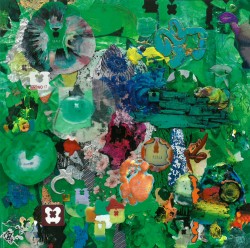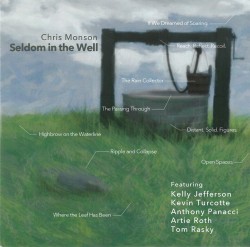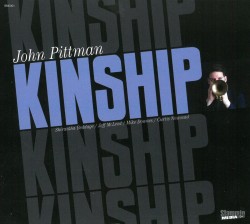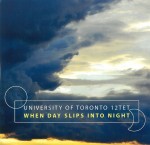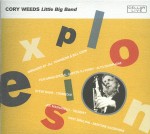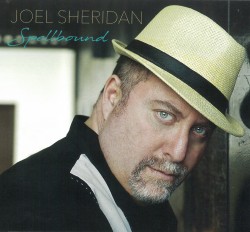At least when it comes to exploratory music old definitions no longer apply. Only on the equivalent of a rigid Doug Ford-like populist disc will you find players insisting on one style, be it rock, noise, jazz-improv or so-called classical. Accomplished improvisers in contrast, draw on many sources to create unique musical programs, with sophisticated electronics regularly and effortlessly added to the mix.
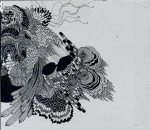 Case in point is Cheol-Kkot-Sae [Steel.Flower.Bird] (Tzadik TZ 4923 okkyunglee.info), by Korean-born, US-raised, Berlin-based cellist Okkyung Lee. Deciding to blend the Korean melodies of her youth with the spiky improv in which she now specializes, Lee was commissioned by SWR to create this CD’s music, performed live at the Donaueschingen Festival. Steel.Flower.Bird consists of textures that are neither wholly Asian nor Occidental, but variations on both genres. Lee’s cello strategy is aided by Korean folk opera vocalist Song-Hee Kwon and traditional Korean percussionist Jae-Hyo Chang representing one approach to the program; and experienced improvisers, saxophonist John Butcher and bassist John Edwards from the UK, American percussionist Ches Smith and Norwegian electronics player Lasse Marhaug embodying the other. No sooner are the first Korean phrases verbalized in a ghostly fashion at the beginning than they’re speedily joined by double-stopping string strokes, saxophone growls and droning electronic whizzes. Before this sequence is overwhelmed by a crescendo of rocket-ship-launching explosions from Marhaug’s knob-twisting, snarky kazoo-like tones from the saxophonist and string splaying, the narrative moves to a quieter place, where unhurried instrumental lowing makes the perfect accompaniment for Song’s bel canto warbling. Smith’s vibraphone ringing and Butcher’s swirling chirps create a connective intermezzo, which is also a prelude to a similar instrumental break that features a duet between Korean and Western percussion, showcasing a two-part backbeat rather than any exoticism. Building on a slinky counterpoint propelled by Smith’s vibraphone resonations and Edwards’ chunky thumps, the piece climaxes as tongue slaps and honks from Butcher sail on top of muted vocalizing and spiccato cello string pressure. When joined by tremolo percussion stops, the music continues to echo past as applause begins. Oddly enough the subsequent encore/coda includes dynamic chording from an un-credited pianist that puts into bolder relief shrill and strained strokes from the cello as both instruments join for a concluding melody that sounds like the children’s round The Worms Crawl In, The Worms Crawl Out.
Case in point is Cheol-Kkot-Sae [Steel.Flower.Bird] (Tzadik TZ 4923 okkyunglee.info), by Korean-born, US-raised, Berlin-based cellist Okkyung Lee. Deciding to blend the Korean melodies of her youth with the spiky improv in which she now specializes, Lee was commissioned by SWR to create this CD’s music, performed live at the Donaueschingen Festival. Steel.Flower.Bird consists of textures that are neither wholly Asian nor Occidental, but variations on both genres. Lee’s cello strategy is aided by Korean folk opera vocalist Song-Hee Kwon and traditional Korean percussionist Jae-Hyo Chang representing one approach to the program; and experienced improvisers, saxophonist John Butcher and bassist John Edwards from the UK, American percussionist Ches Smith and Norwegian electronics player Lasse Marhaug embodying the other. No sooner are the first Korean phrases verbalized in a ghostly fashion at the beginning than they’re speedily joined by double-stopping string strokes, saxophone growls and droning electronic whizzes. Before this sequence is overwhelmed by a crescendo of rocket-ship-launching explosions from Marhaug’s knob-twisting, snarky kazoo-like tones from the saxophonist and string splaying, the narrative moves to a quieter place, where unhurried instrumental lowing makes the perfect accompaniment for Song’s bel canto warbling. Smith’s vibraphone ringing and Butcher’s swirling chirps create a connective intermezzo, which is also a prelude to a similar instrumental break that features a duet between Korean and Western percussion, showcasing a two-part backbeat rather than any exoticism. Building on a slinky counterpoint propelled by Smith’s vibraphone resonations and Edwards’ chunky thumps, the piece climaxes as tongue slaps and honks from Butcher sail on top of muted vocalizing and spiccato cello string pressure. When joined by tremolo percussion stops, the music continues to echo past as applause begins. Oddly enough the subsequent encore/coda includes dynamic chording from an un-credited pianist that puts into bolder relief shrill and strained strokes from the cello as both instruments join for a concluding melody that sounds like the children’s round The Worms Crawl In, The Worms Crawl Out.
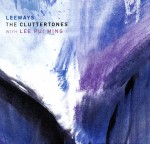 Encompassing a five-part suite and shorter features, the array of musical paths followed on Toronto-based The Cluttertones’ Leeways (SnailBongBong SBB 005 robclutton.com) make the previous CD appear singularly directed. Tunes composed by bassist/leader Rob Clutton feature fine performances by the band – trumpeter Lina Allemano, guitarist/banjoist Ted Posgate, Ryan Driver on analogue synth and vocals plus Clutton – with pianist Lee Pui Ming joining for the title suite. Remarkably enough, Lee’s formalist/improv comping is no more prominent on those five tracks than the other players’ contributions. In fact it’s Allemano’s gritty, back-of-throat growls and rounded capillary exposition that make the greatest impression on Leeways Part 2, when backed by keyboard jumps; and a similar scenario unfolds on Leeways Part 3. Here Clutton agilely moves the tune forward with discursive-but-emphasized string drones, vibrating multi-string slaps and pinched sul tasto runs as Lee comps, the banjo twangs bluegrass-like and synthesizer tones tweet. Earlier on, the most fully realized group effort is Septiembre. Consisting of a slew of intermezzos, it highlights double-bass stopping, buzzing electric guitar licks and high-pitched trumpet slurs, with a conclusion that’s rhythmically solid and notably kinetic. Instructively Gull, the first track, effectively adumbrates what’s to come, as crackles and flutters from the synth underscore a near-vocalized, muted trumpet tone, sometimes harmonized with a walking bass line, spiky guitar flanges and Driver’s high-pitched scat singing. Unfortunately, it is these songs that undermine the entire disc’s effectiveness. Those times when Driver mouths the impressionistic folksy lyrics in a lachrymose fashion – almost halting the proceedings – are saved from stasis by pointed trumpet obbligatos. With the skill and sophistication displayed on the other tracks, it’s unfortunate that vocalizing prevents Leeways from reaching the highest musical rung.
Encompassing a five-part suite and shorter features, the array of musical paths followed on Toronto-based The Cluttertones’ Leeways (SnailBongBong SBB 005 robclutton.com) make the previous CD appear singularly directed. Tunes composed by bassist/leader Rob Clutton feature fine performances by the band – trumpeter Lina Allemano, guitarist/banjoist Ted Posgate, Ryan Driver on analogue synth and vocals plus Clutton – with pianist Lee Pui Ming joining for the title suite. Remarkably enough, Lee’s formalist/improv comping is no more prominent on those five tracks than the other players’ contributions. In fact it’s Allemano’s gritty, back-of-throat growls and rounded capillary exposition that make the greatest impression on Leeways Part 2, when backed by keyboard jumps; and a similar scenario unfolds on Leeways Part 3. Here Clutton agilely moves the tune forward with discursive-but-emphasized string drones, vibrating multi-string slaps and pinched sul tasto runs as Lee comps, the banjo twangs bluegrass-like and synthesizer tones tweet. Earlier on, the most fully realized group effort is Septiembre. Consisting of a slew of intermezzos, it highlights double-bass stopping, buzzing electric guitar licks and high-pitched trumpet slurs, with a conclusion that’s rhythmically solid and notably kinetic. Instructively Gull, the first track, effectively adumbrates what’s to come, as crackles and flutters from the synth underscore a near-vocalized, muted trumpet tone, sometimes harmonized with a walking bass line, spiky guitar flanges and Driver’s high-pitched scat singing. Unfortunately, it is these songs that undermine the entire disc’s effectiveness. Those times when Driver mouths the impressionistic folksy lyrics in a lachrymose fashion – almost halting the proceedings – are saved from stasis by pointed trumpet obbligatos. With the skill and sophistication displayed on the other tracks, it’s unfortunate that vocalizing prevents Leeways from reaching the highest musical rung.
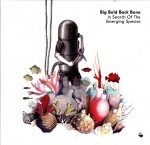 Subtract vocals, piano and double bass and add drums and In Search of the Emerging Species (Shhpuma SSH 032 CD shhpuma.com) provides a glimpse of how The Cluttertones would sound if tunes were trimmed even further to languorous microtones. Consisting of Swiss musicians, trumpeter/slide trumpeter Marco Von Orelli and Sheldon Suter, who plays prepared drums, plus Portuguese stylists, guitarist-object manipulator Luis Lopes and Travassos on electronics, Big Bold Back Bone (BBBB) creates a single slab of darkened calculations where undulating pulses and metal-against-metal buffeting underlie a hard drum beat and guitar string strumming, as distant brass puffs advance the theme. Collective in execution, BBBB links Immerge to some of Morton Feldman’s compositions which stretch out without climaxing, but this quartet reveals its jazz and rock roots by, for instance, reaching a crescendo of trumpet slurps and sighs two-thirds of the way through. With this breakthrough, the heart monitor-like pacing of electronics is further breached by drum clatters and a near solo from Von Orelli that speeds up into expressive whistles and buzzes, backed by ascending drum raps, until the entire performance dissolves into silence.
Subtract vocals, piano and double bass and add drums and In Search of the Emerging Species (Shhpuma SSH 032 CD shhpuma.com) provides a glimpse of how The Cluttertones would sound if tunes were trimmed even further to languorous microtones. Consisting of Swiss musicians, trumpeter/slide trumpeter Marco Von Orelli and Sheldon Suter, who plays prepared drums, plus Portuguese stylists, guitarist-object manipulator Luis Lopes and Travassos on electronics, Big Bold Back Bone (BBBB) creates a single slab of darkened calculations where undulating pulses and metal-against-metal buffeting underlie a hard drum beat and guitar string strumming, as distant brass puffs advance the theme. Collective in execution, BBBB links Immerge to some of Morton Feldman’s compositions which stretch out without climaxing, but this quartet reveals its jazz and rock roots by, for instance, reaching a crescendo of trumpet slurps and sighs two-thirds of the way through. With this breakthrough, the heart monitor-like pacing of electronics is further breached by drum clatters and a near solo from Von Orelli that speeds up into expressive whistles and buzzes, backed by ascending drum raps, until the entire performance dissolves into silence.
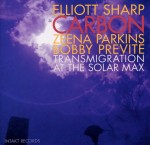 Much more aggressive in performance with its mixture of improvised jazz, noise, heavy rock and notated music tropes is Elliott Sharp’s Carbon, whose five selections on Transmigration at the Solar Max (Intakt CD311 intaktrec.ch) could be mistaken for metal music until examination reveals that it’s head-expanding rather than headbanging. Sharp’s unrestrained and mangled expositions on eight-string guitarbass, soprano saxophone, electronics, samples and textures don’t mask his university studies in electronics and composition with Feldman and others. He manages to be both aggressive and accommodating in his solos, joined by Zeena Parkins on electric harp and Bobby Previte on drums. Nowhere is this more apparent than on Orrery, where backbeat drum rhythms and blips from electronic samples are transmogrified through tempo changes into a psychedelic blues. In similar fashion, while slurred guitar licks and irregular drum beats serrated by electric harp tension on Perihelion may resemble standard rock tropes, the conjoined patterns that slowly build up alongside them recall the perpetual drone-stretching in the works of notated composers like Charlemagne Palestine and La Monte Young. Not committed to any overriding style however, Sharp also ensures that his five compositions include contrapuntal challenges, with Parkins’ often bottleneck-style vibrations bringing in multiple note extensions, and his own flashing guitar excursions human enough so that his finger positions on the strings are almost visible.
Much more aggressive in performance with its mixture of improvised jazz, noise, heavy rock and notated music tropes is Elliott Sharp’s Carbon, whose five selections on Transmigration at the Solar Max (Intakt CD311 intaktrec.ch) could be mistaken for metal music until examination reveals that it’s head-expanding rather than headbanging. Sharp’s unrestrained and mangled expositions on eight-string guitarbass, soprano saxophone, electronics, samples and textures don’t mask his university studies in electronics and composition with Feldman and others. He manages to be both aggressive and accommodating in his solos, joined by Zeena Parkins on electric harp and Bobby Previte on drums. Nowhere is this more apparent than on Orrery, where backbeat drum rhythms and blips from electronic samples are transmogrified through tempo changes into a psychedelic blues. In similar fashion, while slurred guitar licks and irregular drum beats serrated by electric harp tension on Perihelion may resemble standard rock tropes, the conjoined patterns that slowly build up alongside them recall the perpetual drone-stretching in the works of notated composers like Charlemagne Palestine and La Monte Young. Not committed to any overriding style however, Sharp also ensures that his five compositions include contrapuntal challenges, with Parkins’ often bottleneck-style vibrations bringing in multiple note extensions, and his own flashing guitar excursions human enough so that his finger positions on the strings are almost visible.
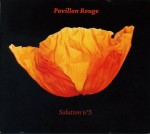 Utilizing the brass timbres advanced by The Cluttertones and BBBB and intertwining them with electronic processing common to all these discs is Solution n°5 (LFDS Records LFDS 006 lefondeurdeson.fr) created by the Paris-based Pavillon Rouge trio. With trumpeter Nicolas Souchal’s sometimes eloquent and sometimes expeditious flights, plus alternately growling and blasting tones from Matthias Mahler’s trombone, the acoustic improvising program is satisfied, while the wide range of Jean-Marc Foussat’s electronics that include sampling, signal processing and granular synthesis takes care of the computerized input. Not only do the stop-start loops of Foussat’s machine provide a continuous base on which the horn players can expose their sometimes brief improvisational forays, but his collection of tones and timbres balance, parallel and surprise with such interjections. Add ring modulator-like bell ringing, the replication of Jew’s harp twanging and time and pitch stretched verbalization that takes the form of blurry mumbled phrases or layered textures that build up to the breadth, but not the volume of a choir performing Gregorian chants. While some sections are obtuse and others nearly opaque, the tracks make room for fluid contrapuntal challenges among the three players, with brassy tones turning calliope-like or to atonal triplets before acceding to regularized pulses. Meanwhile, the effect of the electronic undertow is to reconcile all parts so that the sonic performance of these instant compositions is stretched to the absolute limits, without splintering, eventually wrapping up with a finalized hiss.
Utilizing the brass timbres advanced by The Cluttertones and BBBB and intertwining them with electronic processing common to all these discs is Solution n°5 (LFDS Records LFDS 006 lefondeurdeson.fr) created by the Paris-based Pavillon Rouge trio. With trumpeter Nicolas Souchal’s sometimes eloquent and sometimes expeditious flights, plus alternately growling and blasting tones from Matthias Mahler’s trombone, the acoustic improvising program is satisfied, while the wide range of Jean-Marc Foussat’s electronics that include sampling, signal processing and granular synthesis takes care of the computerized input. Not only do the stop-start loops of Foussat’s machine provide a continuous base on which the horn players can expose their sometimes brief improvisational forays, but his collection of tones and timbres balance, parallel and surprise with such interjections. Add ring modulator-like bell ringing, the replication of Jew’s harp twanging and time and pitch stretched verbalization that takes the form of blurry mumbled phrases or layered textures that build up to the breadth, but not the volume of a choir performing Gregorian chants. While some sections are obtuse and others nearly opaque, the tracks make room for fluid contrapuntal challenges among the three players, with brassy tones turning calliope-like or to atonal triplets before acceding to regularized pulses. Meanwhile, the effect of the electronic undertow is to reconcile all parts so that the sonic performance of these instant compositions is stretched to the absolute limits, without splintering, eventually wrapping up with a finalized hiss.
Each of these sessions could define modern improvising. All draw on electronic interface and nod to various strands of music without hierarchy. And except in high quality, not one resembles any of the others.
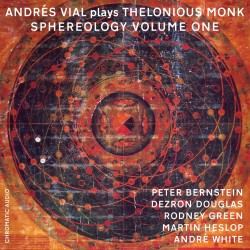 Plays Thelonious Monk: Sphereology Volume One
Plays Thelonious Monk: Sphereology Volume One






